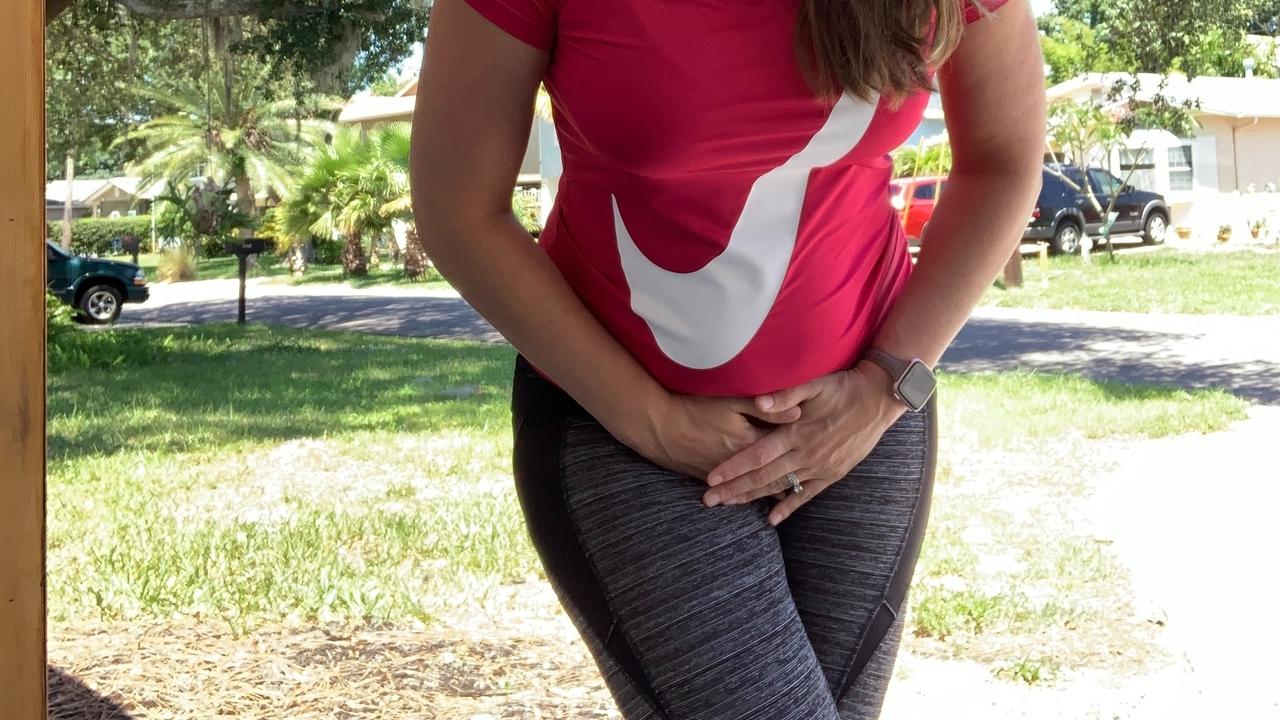What is stress urinary incontinence and how can pelvic PT help?

Rebecca is a 20-year-old college student who plays club volleyball at her university. She has been physically active throughout her life and played multiple sports while in high school. Unfortunately, Rebecca leaks urine at least once every volleyball practice and game, so she has coped by wearing a pad to prevent any unwelcomed odor.
Julie is a 35-year-old mother of two who is 12 weeks post-partum with her second daughter. She felt that she “bounced back” after her first child but this second pregnancy and delivery really “did me in”. She wears pads consistently throughout the day as she is unable to prevent urine leakage when going from a sitting to standing position, lifting her children, and sneezing.
Although it may seem a bit unexpected that a 20-year-old athlete and a 35-year-old mother have the same condition, it is much more common than women like to admit. Both Rebecca and Julie have stress urinary incontinence, which is the involuntary leakage of urine with effort or exertion, such as standing up, walking, jumping coughing, or sneezing.
According to the U.S. National Health and Nutrition Examination Survey from 2001-2004, 49.6% of women report urinary incontinence with 49.8% reporting stress urinary incontinence (Dooley et al., 2008). Risk factors for incontinence in the general population include: older age, obesity, gynecological and/or pelvic surgery, pregnancy, hormonal factors, diabetes, and vaginal childbirth (with instrumental use increasing the risk) (Figuers, 2014). Further research on risk factors specific to the female athlete population has been encouraged, but general risk factors include: intensive exercise and/or eating disorders resulting in low estrogen levels (Figuers, 2014).
Almost 50% is A LOT of women dealing with incontinence! However, it is important to remember that just because something is common doesn’t mean it’s normal.
The good news is pelvic floor physical therapy is the least invasive treatment option and recommended as the first approach to incontinence as there are no negative side effects (Figuers, 2014). This therapy includes instruction and feedback on how to currently strengthen and coordinate the pelvic floor muscles, find appropriate positions to perform your pelvic floor muscle exercises, and education on nutrition and fluid intake (Ghaderi and Ali, 2014). Women who are supervised by a physical therapist during their strengthening program, as compared to those who are not, demonstrate greater improvement in continence and quality of life (Zaneti et al., 2007).
So, if you are a Rebecca or Julie or just plain leaking urine, reach out to a pelvic floor physical therapist near you and begin your journey to a leak-free life!
Written By: Dr. Jordan Lindblom, PT, DPT
References
Dooley Y, Kenton K, Cao G, et al. Urinary incontinence prevalence: results from the National Health and Nutrition Examination Survey. J Urol. 2008;179(2)c656-61.
Figuers, Carol. "Stress Urinary Incontinence in Female Athletes." Journal of Women's Health Physical Therapy 38.3 (2014): 104–109-104&ndash-ndash;109-104–109.
Ghaderi, Fariba, and Ali E. Oskouei. "Physiotherapy for Women with Stress Urinary Incontinence: A Review Article." Journal of Physical Therapy Science 26.9 (2014): 1493-1499.
Zanetti, Míriam Raquel Diniz et al. “Impact of supervised physiotherapeutic pelvic floor exercises for treating female stress urinary incontinence.” Sao Paulo medical journal = Revista paulista de medicina vol. 125,5 (2007): 265-9. doi:10.1590/s1516-31802007000500003

